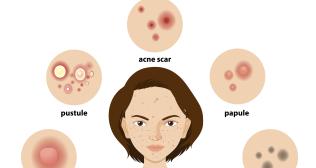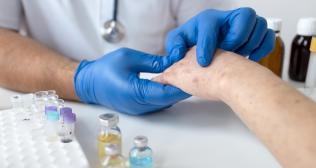
Understanding Skin Tags: Causes, Removal, and Prevention
Our skin is a dynamic organ, and it's not uncommon to discover small, unexpected growths from time to time. Among the most common of these are skin tags, those tiny, soft flaps of skin that seem to appear out of nowhere. While they are completely harmless, their presence, especially in visible areas or places where they are easily irritated by clothing or jewelry, can be a cosmetic concern for many.
Finding a new growth can be worrying, but when it comes to skin tags, reassurance is key. These common blemishes are benign and not a sign of a serious medical condition. Gaining a clear understanding of why they form and the safe, effective methods for their removal can provide both knowledge and peace of mind.
What Are Skin Tags?
Before discussing removal, it's important to know what are skin tags. Medically known as acrochordons, skin tags are small, soft, benign (non-cancerous) skin growths. They are typically composed of loose collagen fibers and blood vessels surrounded by skin. They hang off the body from a thin piece of tissue called a stalk, or peduncle.
The primary skin tag symptoms are their physical appearance. They are usually:
- Flesh-colored or slightly darker than the surrounding skin.
- Soft and easily movable.
- Painless, although they can become irritated and sore if they are repeatedly rubbed or snagged.
- Varying in size from very small (a pinpoint) to the size of a grape.
They most commonly appear in areas where skin rubs against skin, such as the neck, armpits, groin, under the breasts, and on the eyelids.
The Common Reason for Skin Tags
The exact science behind why skin tags form is not fully understood, but research and clinical experience point to several key contributing factors. The reason for skin tags is often a combination of genetics, friction, and underlying metabolic processes.
Friction and Skin Rubbing
The most widely accepted theory for what causes skin tags is friction. Because they most often develop in skin folds, it is believed that the constant rubbing of skin against skin leads to the formation of these small growths.
Insulin Resistance and Metabolic Health
A growing body of evidence shows a strong link between the presence of multiple skin tags and metabolic health. Insulin resistance, a condition where the body's cells don't respond well to the hormone insulin, is a significant factor. This condition is a precursor to type 2 diabetes and is often associated with metabolic syndrome. The high levels of insulin and other growth factors in the blood may stimulate the growth of skin cells, leading to the formation of tags.
Hormonal Changes
Fluctuations in hormones can also play a role. It is very common for pregnant women to develop skin tags, which is believed to be due to the hormonal shifts that occur during pregnancy.
Genetics
There appears to be a hereditary component to skin tags. If your close family members have them, you are more likely to develop them as well.
What about Skin Tags on the Face?
While less common than in skin folds, skin tags can appear on the face, particularly on the eyelids. The skin tags on face causes are often the same as elsewhere on the body, with genetics and potential links to metabolic factors playing a role.
Safe and Effective Skin Tag Removal
For those who find their skin tags bothersome, there are several safe and highly effective medical procedures available. A proper skin tag treatment should always be performed by a dermatologist or a trained medical professional to ensure safety and prevent complications.
Professional Medical Treatments
The most common methods for professional skin tag removal include:
- Cryotherapy: This involves freezing the skin tag off with liquid nitrogen. The tag will typically fall off within 10-14 days.
- Surgical Excision: The doctor numbs the area and then carefully snips off the skin tag with sterile surgical scissors or a scalpel. This provides immediate removal.
- Electrosurgery (Cauterization): This method uses a specialized tool to burn the skin tag off at its base with an electrical current. The heat also cauterizes the wound, preventing bleeding.
These professional procedures are quick, safe, and have a low risk of scarring when performed correctly.
The Dangers of At-Home Removal
A quick search online reveals many suggestions for how to remove skin tags naturally or with DIY kits. These methods are strongly discouraged by medical professionals due to the significant risks involved. Attempting to figure out how to remove skin tags on your own can lead to:
- Infection: Using non-sterile tools can introduce bacteria into the skin, leading to a painful infection.
- Bleeding: Skin tags contain blood vessels, and cutting them can cause significant bleeding that may be difficult to control at home.
- Scarring: Improper removal can easily lead to permanent and unsightly scarring, which is often worse than the original skin tag.
- Incomplete Removal: If the base of the tag is not fully removed, it can grow back.
- Misdiagnosis: Perhaps the greatest risk is that you could be attempting to remove something that is not a skin tag. Some skin cancers can mimic the appearance of benign growths, and delaying a proper diagnosis can have serious consequences.
Managing and Preventing Skin Tags
While you cannot completely prevent skin tags, especially if you have a genetic predisposition, certain lifestyle choices may help reduce your risk. Maintaining a healthy weight can reduce the number of skin folds where friction occurs. Additionally, managing your blood sugar and addressing insulin resistance through a healthy diet and regular exercise may help lower your risk of developing new tags.
A Safe Approach to Clearer Skin
Skin tags are a common and harmless part of life for many people. While they pose no medical threat, the decision to remove them for cosmetic reasons is a personal one. Opting for a professional skin tag removal by a dermatologist is always the safest and most effective choice.
Resist the temptation of quick-fix home remedies, as the risks of infection and scarring far outweigh any potential benefits. By entrusting your skin to a medical expert, you can achieve the clear results you desire without compromising your health and safety.
Frequently Asked Questions
1. Are skin tags contagious?
Ans. No, skin tags are not contagious. You cannot catch them from someone else or spread them to other parts of your own body by touching them.
2. Do skin tags grow back after being removed?
Ans. When a skin tag is properly and completely removed by a doctor, it does not grow back. However, you may still develop new skin tags in other areas in the future.
3. Is skin tag removal painful?
Ans. Professional removal is typically not painful. A doctor will use a local anesthetic to numb the area completely before the procedure. You may feel a slight stinging or pinching sensation, but the removal itself is painless.
4. Does having skin tags mean I have diabetes?
Ans. Not necessarily. While there is a strong association between multiple skin tags and insulin resistance (a precursor to diabetes), having skin tags does not automatically mean you have diabetes. It should be seen as a potential signal to get your blood sugar checked.
5. Why shouldn't I just cut a small skin tag off myself?
Ans. Even a small skin tag has its own blood supply. Cutting it yourself with non-sterile scissors can cause bleeding that is hard to stop and poses a high risk of infection and scarring.


















